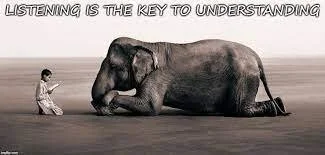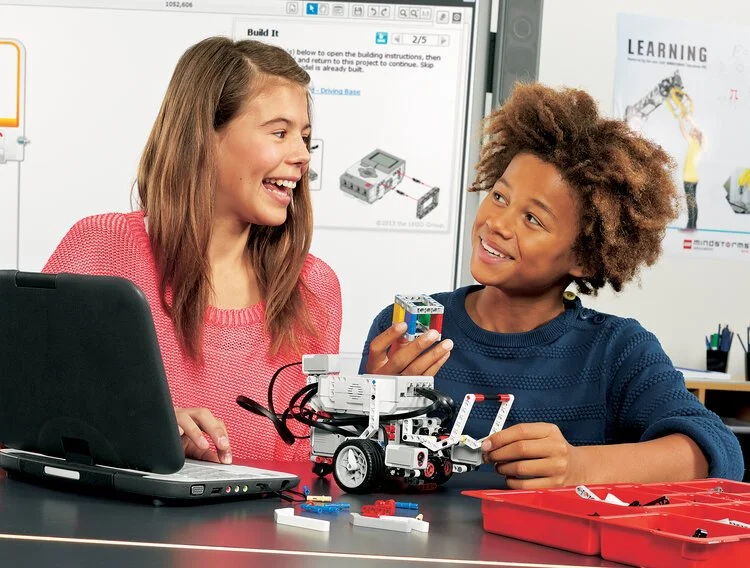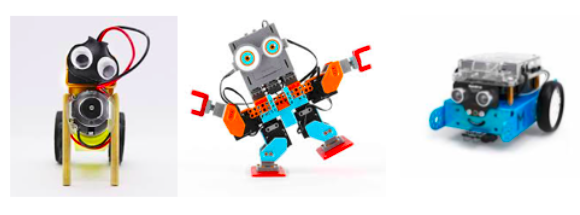EDU Trending: Listening is the Key to Understanding.
We do not have to think alike to listen to each other’s views. It is especially when we do not agree that we should appreciate another’s perspective and be open to real understanding. It is how we grow.
Little ones observe, listen, and subconsciously understand this when they see very different creatures on Sesame Street interact – sometimes with impatience and anger, and always with affection and respect for each other. Older children live the concepts of acceptance and partnership in the give and take of friendships, through team sports and group work in class.
When we listen, we begin to understand not only where we are different but how we are the same. Sameness may be about culture, race, religion, or personal experience. Or, it may simply be a shared love of soccer, spicy foods, robotics, or graphic novels. The hope is that through common ground we can come together for common good.
Listening, understanding, and finding common ground is a complicated process.
Over the past several months, we have witnessed adults passionately talking at and past each other about Critical Race Theory (CRT). The goal of theory activists is that history reports the facts about slavery and examines its impact on racial inequities and divisions in the United States. The questions are: Then what? How do we show kids how to treat each other? How can they learn to get along with others; to talk, work, and play together; to enjoy being with each other? These questions are explored on my website both in the blog titled “And the Pendulum Swings…” and in Forging the Divide found at https://www.merleschell.com/reflections
If we really listen to each other, my hope is one day soon, we and our children will no longer judge or be judged by stereotypes and tropes, but only by what we say, what we do, and how we treat each other as human beings. These issues are explored on my website in the blog titled “And the Pendulum Swings…”
News and Views: Robotics and 21st Century Education?
Robotics may prove to be the great equalizer in education. It requires creative problem-solving that results in successful learning and identifies students’ potential and future opportunities without bias or favor based on gender, race, religion, culture, or nationality. For more details, please check out the article and video at https://www.the74 million.org/ article/reno-bets-on-robotics-for-the-future-of-its-kids/ which appeared on August 4, 2021 in The 74.
Could it be that in order to achieve fairness, equity, and impartial evaluation in education, we have to take human beings out of the equation? Is it possible that robots - mere bits and bytes of machinery - have something to teach us about how to de-program our biases and curb our baser emotions to be more objective, better people? Are robots better than human teachers for our children?
Robotics and robots do have an important role to play in the classroom. Whether students work alone or in a group, robotics is fun, almost like play. Students build and operate robots based on their own ideas. This is learning by doing that starts with imagination and creativity. It requires critical-thinking, understanding of math and science concepts, trial and error, collaboration, and the persistence to problem-solve and produce successful results:
The magic creatures that began as fantastical ideas, brought to life through the wonder of science.
Despite all the benefits robots and robotics provide, teachers of the human kind are absolutely necessary for students’ success. Teachers provide basic knowledge in STEM. They guide, facilitate, review, and demonstrate how to test different ideas, if necessary.
Teachers complete the equation by doing what humans do and robots cannot. They listen; they encourage; they empower. They care. They support, celebrate, and validate students’ efforts. In other words, teachers relate individually to each child personally as well as intellectually.
Bottom line: Robots are powerful tools that teachers can use to engage and motivate student thinking and learning. In a larger sense, the science of robotics underscores a vital lesson: Children think best, learn best, and remember most when the acquisition of knowledge is enjoyed and fully realized through the engagement of hearts and minds and hands-on participation in the process.
Question of the Day:
Who said: “This Fourth of July is yours, not mine… “above your national, tumultuous joy, I hear the mournful wail of millions… [Yet] I do not despair of this country… drawing encouragement from the Declaration of Independence, the great principles it contains, and the genius of American Institutions….”
Stacey Abrams
Frederick Douglass
Martin Luther King, Jr.
Maya Angelou
For the answer, please go to https://www.merleschell.com/blog/z62pssro1lhdo0sksiyhkaqsfy0l5l
From Me to You:
For all of us, I offer the respite and hope of autumn. If you live within driving distance of the spectacular display of fall foliage, get in your car and drink in the wonder. If you live in apple country, spend the day picking your own; buy a just made jug of cider; then go home and bake an apple pie that will make your grandma proud. For more, read Memories of Autumn on my website at https://www.merleschell.com/reflections
Even if iconic symbols of autumn are not in your backyard, you can still experience normalcy, fun, and renewal in the air because fall marks some wonderful beginnings: The start of school, college and pro football, college applications, and Halloween festivities. These are precursors to the winter’s month of holidays: Christmas, Hanukkah, Kwanzaa, and in spring, 2022, Eid al-Fitr, the three-day celebration that comes at the end of Ramadan.
What do these holidays have in common? First, they are gatherings of family and friends where good food is eaten, love and laughter are shared, and gifts are exchanged. Second, they represent faith and hope for the inauguration of a new year. And all this begins with the coming of fall.





